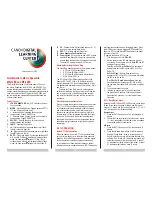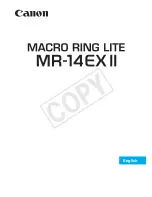
Handbook for the SXV-M25C Issue 1 June 2004
10
This includes various options for correcting the colour synthesis for variations in the
lighting conditions, filters etc. Briefly, these items perform the following functions:
1)
Daylight Image?
– If an unfiltered lens is used, the infra-red content of the
light will tend to produce a Green – Blue shift in the balance. A partial
correction of this bias is provided by selecting this option, but the best option
is to use an infra-red blocking filter when taking daylight shots (see 5 below).
2)
Light Pollution Correction:
- This option is for deep sky colour images,
where a strong colour bias is often present in the sky background. This option
attempts to return the background colour to a neutral grey.
3)
Colour Smoothing Filter:
- Applies a low pass filter to the colour data to
smooth out colour noise.
4)
Apply Anti
-
Alias:
- Runs a special filter over the colour data to remove
coloured artefacts around sharp edges. This is especially useful for cleaning up
erratically coloured star images.
5)
IR Filter Used? –
Sets the colour balance to allow for the loss of infra-red
content when using an IR blocking filter.
6)
Stretching: -
A selection of contrast-boosting options which are preset for
various subjects.
7)
Remove Background: -
This option will adjust the sky background brightness
to give an optimum background level.
8)
High Pass filters:
- Automatically sharpen the luminance data to emphasise
fine details. Most useful for sharpening planetary images but will also increase
the noise content.
For your first test images, I suggest that you turn on the Anti-Alias option and
possibly the ‘Daylight Image’ option.











































